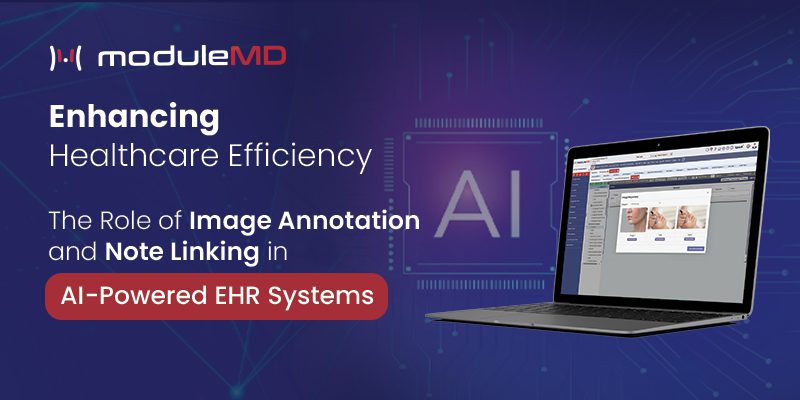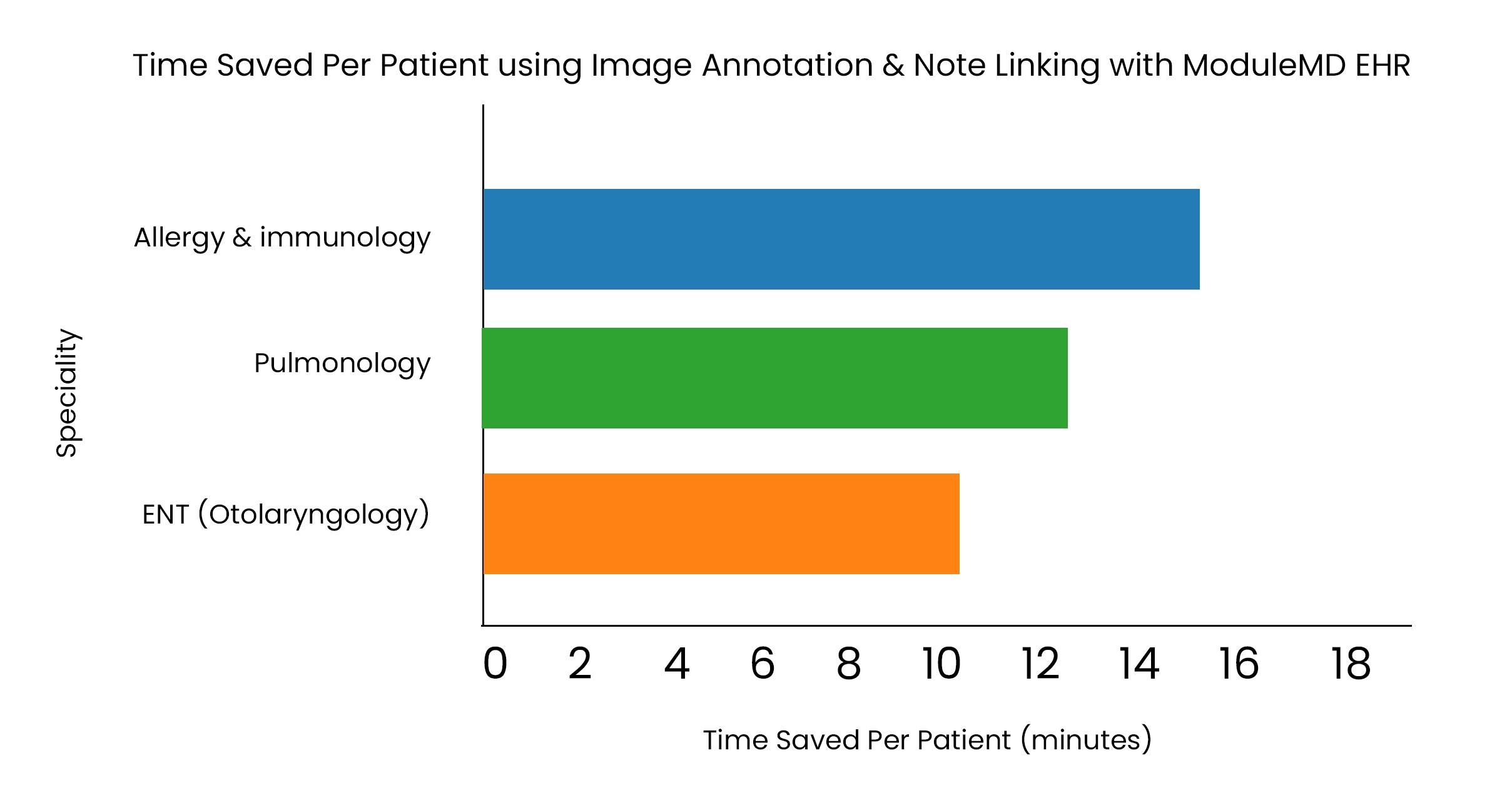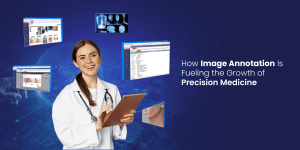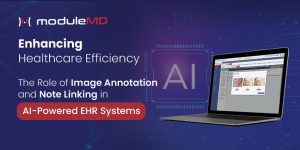Home > Blogs > EHR

The incorporation of image annotation and note linking into Electronic Health Records (EHR) systems has become essential in the rapidly changing healthcare landscape. These technologies not only improve patient care and diagnostic accuracy but also streamline clinical workflows.
Image annotation in healthcare involves labeling medical images with relevant clinical information, such as highlighting lesions, allergies or specific areas of infections. This process includes identifying anatomical structures, highlighting abnormalities, and marking regions of interest. By converting complex visual data into structured formats, image annotation enables healthcare professionals and AI systems to interpret and analyze medical images effectively. This function allows clinicians to 'mark what matters' directly on the image for instant clarity.
The importance of image annotation lies in its ability to:
Enhance Diagnostic Clarity & Precision: Annotated images help medical professionals by offering clear labels and markers, linking the visual evidence directly to the clinical findings. This brings precision to every note.
Facilitate AI Training: Annotated images are used as training data for AI models, which helps them identify patterns and learn, improving diagnostic capabilities.
Streamline Clinical Workflows: Clinicians can reduce delays in patient care by making well-informed decisions quickly with easily accessible annotated images.
In an EHR system, note linking is the process of connecting clinical notes to pertinent medical images. A comprehensive picture of the patient's condition is made possible by this integration, which guarantees that medical professionals have complete access to both textual and visual patient data. The image and the note are always displayed in sync, ensuring the clinician has all necessary context at a glance.
Note linking offers several advantages:
Comprehensive Patient Records: Healthcare professionals can view all pertinent information in one location and make better decisions by linking images to corresponding clinical notes.
Improved Communication: Note linking improves communication among healthcare teams by providing a unified platform where all patient data is accessible and contextualized.
Efficient Documentation and Retrieval: By referencing and linking images directly within the patient's notes, clinicians can reduce redundancy and potential errors in their documentation of findings.
The system eliminates the need to search disconnected folders for images.
When integrated, image annotation and note linking create a cohesive system that enhances patient care:
Image Capture & Storage: Medical images are captured using diagnostic tools or a mobile device and immediately stored in a central Image Repository.
Annotation: Relevant features within the images are annotated with labels and markers.
Note Creation: Clinicians write notes detailing their observations and interpretations.
Linking: The annotated image is seamlessly linked to the corresponding clinical notes within the EHR system.
This workflow ensures that all pertinent information is readily available, reducing the risk of oversight and improving the efficiency of clinical processes.
The central Image Repository keeps ’every image exactly where it belongs.
The integration of image annotation and note linking within EHR systems benefits various stakeholders:
Healthcare Providers: Clinicians and radiologists gain enhanced tools fordiagnosis and patient management, allowing them to work faster and document smarter.
Patients: Improved diagnostic accuracy and timely interventions significantly enhance patient outcomes.
Healthcare Institutions: Hospitals and clinics experience streamlined operations, leading to increased efficiency and reduced costs.
The application of image annotation and note linking spans various medical specialties, as ModuleMD’s solution is built to handle the unique visual documentation needs of diverse practices :
Accurate image annotation helps providers identify abnormalities faster, supports better clinical decisions, and reduces diagnostic errors, ultimately improving patient outcomes.
ModuleMD supports Allergy & Immunology, Pulmonology, ENT (Otolaryngology), and Internal Medicine, helping providers efficiently document and link annotated images to clinical notes for streamlined patient care.
Yes. ModuleMD enables secure sharing of annotated images and linked notes with other authorized providers, facilitating collaboration and continuity of care.
By integrating image annotation and note linking, ModuleMD reduces the time spent documenting patient findings manually. Providers can annotate images, link notes, and access comprehensive records quickly, saving minutes per patient that add up across daily workflows.

ModuleMD EHR is fully HIPAA-compliant, ensuring that all annotated images and linked notes are securely stored and accessible only to authorized healthcare providers
The integration of image annotation and note linking within EHR systems is an important breakthrough in healthcare technology. By enhancing diagnostic accuracy, improving communication, and streamlining workflows, these technologies play a crucial role in delivering high-quality patient care. ModuleMD EHR leverages advanced image annotation and note linking features, allowing clinicians to annotate images, link them directly to patient notes, and access comprehensive records seamlessly. This integration improves diagnostic efficiency, reduces errors, and ensures better patient outcomes, making ModuleMD a powerful tool for modern healthcare practices.
You may like these too…


